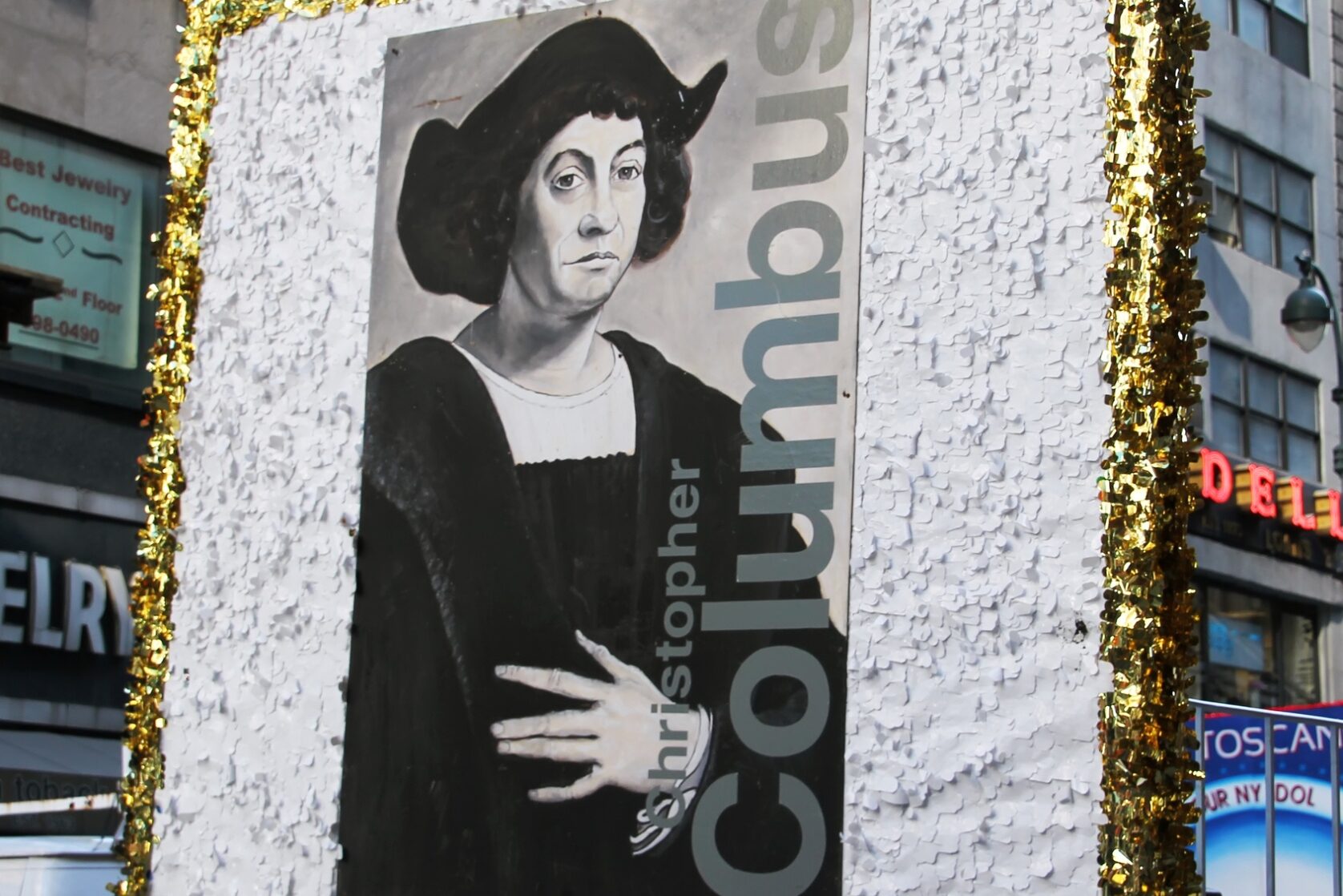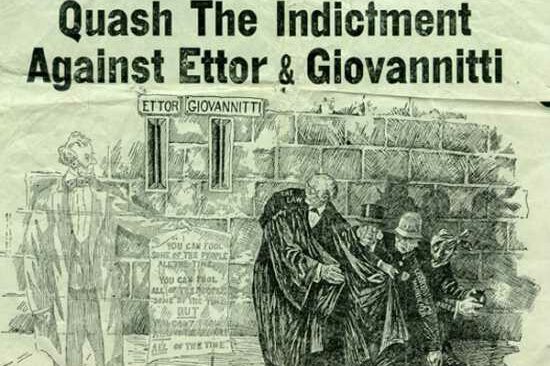Dear Readers,
March brings shamrocks and my annual “St. Patrick was Italian” column:
A “St. Patrick was Italian” remark, tossed into your March conversations, can make boring talk into boiling talk if you have some conversational fodder, to buttress your claim.
The first St. Patrick’s Day in the U.S. was held in Boston in 1734. By stretching things a little bit, you can correctly state that “St. Patrick was Italian”.
Patrick’s parents were Romans. The Romans ruled England at the time. Calpurnius, Patrick’s father, was a high Roman diplomat living in England, but a Roman citizen.
The upper classes, both the natives and those descended from the Roman settlers, as Patrick’s family was, valued the Roman educational system and made sure their children were taught Latin and an appreciation of Roman law and literature.
The Roman invasions of the 1st century B.C. brought Britain into contact with the Continent. When the Roman legions withdrew in the 5th century A.D. Britain fell easy prey to the invading hordes of Angles, Saxons, and Jutes from Scandinavia and the Low Countries.
Patrick was born in England around the year 385 A.D. Roman cities in England had shops and beautiful houses, so Patrick lived the good life for a while, as Britain became Romanized and roads and towns with typical Roman facilities of public baths, temples, basilicas, forums and grand city gates developed.
Across the sea in Ireland (Eire), things were not so good. Tribal kings were constantly feuding, and in the year 400 A.D. a tribal king (Niall) attacked England. He took thousands of prisoners, including Patrick, for slaves. Soon the rich little Roman kid was forced to herd pigs and sheep, just a poor little slave boy far from home.
Patrick was taken to Northern Ireland and sold to another tribal king named Meliucc. Meliucc and his family were kind to Patrick, and their children were good company. Still Patrick (Maewyn) was alone in a strange land, only 14 years old. He did not know the language; he didn’t know if his family was still alive. Patrick slept in a mud hut and was a swineherd.
At 21 years old, after six years as a slave, he ran away. Walking many miles to the sea, he found a ship that took him back to England. By now, the Romans had been chased out; they were no longer the rulers, and the country was in ruins.
Patrick sailed across the channel and wandered through Europe, and then on to Rome, and found that by the year 410 A.D., the center of all Roman power had been conquered as well.
His past was really dead, so he decided to go back to England to think, pray and live very quietly there. While in prayer, he felt certain that God was calling him back to Ireland, to bring all those tribes together and make Ireland a Christian land. But first, Patrick went to France and studied religion there for ten years.
Because he was able to speak Celtic, in the year 432 A.D., Pope Celestine made Patrick a Bishop and named him “Patricius”. Now Bishop Patricius sailed for Ireland. The Irish people were not interested in Christianity and tried to stone him to death.
The Bishop and his men fled and found shelter for the night in a barn near the shore. The barn belonged to a tribal king named Dichu. He thought the Bishop and his men were robbers and wanted to kill him.
Patrick held out his hand and smiled, and a golden aura shone on his face. Dichu put down his weapon, his fierce dog stopped growling (according to legend), and Dichu became the first Christian in Ireland and the barn, the first church.
Patrick traveled all over Ireland. He always had a drummer with him. When he arrived at a village, the drummer would drum, and the people would come from their houses to listen to him (as in drumming up business). Patrick showed them a shamrock, like a three-leafed clover. Patrick explained the idea of the Father, the Son and the Holy Ghost (if no shamrock were handy, he used the water, ice and steam idea).
Today, the shamrock is Ireland’s national flower, and as more and more tribal kings and their people became Christians, they came together to worship and be united as a country. By the time he died in 461, Patrick had converted virtually all of Ireland to Christianity.
Bishop Patricius drummed the snakes out of Ireland and into the sea (according to legend), and built hundreds of Churches. When he died on March 17 (between 461 and 482 A.D.), the Pope declared him a saint and had him buried on church grounds in Downpatrick, Ireland.
In the U.S., St. Patrick’s Day means party time. In Ireland, it means Holy Time and although he is the patron saint of Ireland, Patrick was not a native of that country; he was born in Roman occupied England or Scotland in 385 AD.
For more info on Saint Patrick, call Liguori Publications, 1-800-325-9521 and order The Confession of Saint Patrick by D.R. Howlett, editor and translator. This authentic source of information about Saint Patrick’s life is a brief autobiography written near the end of his life.
For young readers my absolute favorite Saint Patrick book continues to be one by Tomie de Paola, which you can order from your favorite book store or amazon.com.
***
Saint Joseph’s Feast is March 19th. St. Joseph (first century), the husband and foster father of Jesus Christ, was descendent of King David, according to the genealogy presented by the Gospel. Betrothed to Mary, he decided to divorce her quietly when he found out she was with child, but an angel of the Lord told him to take her as his wife, since the child to be born was the “Holy One of God”. Joseph assisted to the birth of Jesus and became his support and guide through childhood. In a dream he was told by an angel to flee from Bethlehem with the infant and his mother, lest Herod kill the child. He accompanied them to the temple where Jesus was presented to God. With Mary, he sought the boy Jesus when he was lost on a pilgrimage to Jerusalem. In his work as a carpenter he shared the many hours of his trade with his son.
***
MUDRICA or MUDRIGA
(Bread crumbs for Pasta)
During the St. Joseph Day celebrations, the traditional Sicilian Pasta con Sarde topping of bread crumbs (Mudrica or Mudriga) is said to be a reminder of the sawdust St. Joseph created as a working carpenter.
Today in villages throughout Italy, foods and feasting in honor of St. Joseph persist, however, in the U.S.A. it is the children of Southern Italian immigrants who are carrying on the Table of San Giuseppe celebrations their grandparents transplanted to their communities and Italo American organizations in New York, Boston, Philadelphia, Los Angeles, San Jose, San Francisco and New Orleans among others. At a San Giuseppe table celebration I once attended, created by descendents of immigrants from Santa Elia, Sicily, every guest was given a small orange, bread roll and dried fava bean to take home. The gift of a blessed fava bean is the most well known of the customs associated with the St. Joseph Altar.
During one of Sicily’s severe famine, the fava bean thrived while other crops failed. It was originally grown for animal fodder, but because of its amazing resilience, it became the sustaining food of the farmer and their families. Legend has it that the person who carries a “Lucky Bean” has a constant reminder to pray to St. Joseph and will also never be without money.
The feast is alternately a source of petition and thanksgiving and many families believe that having a St. Joseph Altar can bring good fortune. St. Joseph Feast Day is a tradition that centers on the entire family.
***































